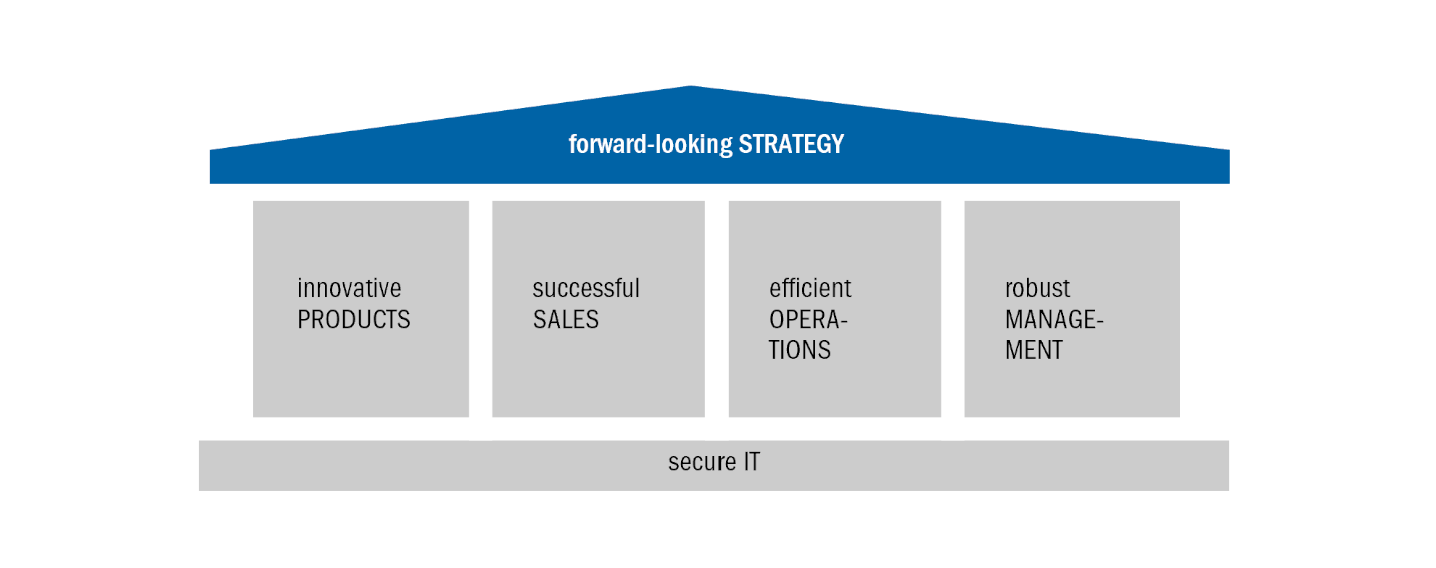Consequences of low interest rate phase and regulation


The consistently solid net interest income of LBS Westdeutsche Landesbausparkasse makes a vital contribution to the stable profit situation of the institution. The near-zero interest rate level, however, will in future put pressure on this key profit component. So the challenge for bank management is to effectively counter these developments both strategically and operationally. The project’s goal was therefore firstly to create reliable transparency about the possible consequences of a prolonged period of low interest rates in the current regulatory environment and secondly to develop a corresponding action program.
Business model-specific challenges of the current environment result from the fact that the tariff system is structured according to legal provisions: On the one hand, dependencies on the interest rate level can be clearly determined on the basis of the fixed contract components. On the other hand, the business model only reacts to adjustments within the tariff structure with a considerable time delay.
Because of this, it was necessary to carefully select and design the scenario for quantifying possible consequences. In addition, an entrepreneurial long-term view was necessary for identifying and utilizing the currently available time slots and control levers so that these only impact the business and profit structure far in the future. The project results were prepared in three substeps and are briefly described below.
The first substep focused especially on the scenarios to be considered for yield curve changes that need to be assessed. As the basis for the action program to be developed, the interest rate scenarios were to be designed without too much optimism; however, at the same time, they should of course not solely be determined by risk factors. As a result, a set of various market interest rate scenarios were identified. These scenarios were expanded to include corresponding assumptions about margin and volume developments, risk provisioning and further cost and profit developments.
The result evaluation in the second substep was based on the question as to what degree (new) regulatory requirements can still be fulfilled despite a prolonged period of low interest rates and without jeopardizing the targets and ambitions of the owners. Here, the observations focused on the simulation of Tier 1 capital ratios and leverage ratios as well as the analysis of profitability development.
The third substep involved the joint derivation and elaboration of a future program whose implementation will make the LBS West “weatherproof” – even in the currently difficult market environment. Four management-relevant fields of action (besides the further progressing work in the area of IT) are in focus.
Once the analysis results were available, it became obvious that there were sufficient options for managing the current challenges. However, it was also clear that it would no longer be sufficient to work on individual sub-aspects separately. Instead, it is necessary to establish comprehensive change processes and incorporate them into a holistic future program.

The project shows that building societies as a whole must react to threats to their profits in the short term in order to prevent being confronted with irreversible profit losses in the medium term.
Based on zeb's understanding of the building society sector, the transfer into long-term impact analyses and also the integrated analysis of profit effects and regulatory consequences, zeb was able to develop an effective bundle of measures together with LBS West within a short period of time in order to counter the challenges posed by low interest rates. Over the next months, LBS West in cooperation with zeb will carry out the operational implementation and the management of these comprehensive transformation and change processes.